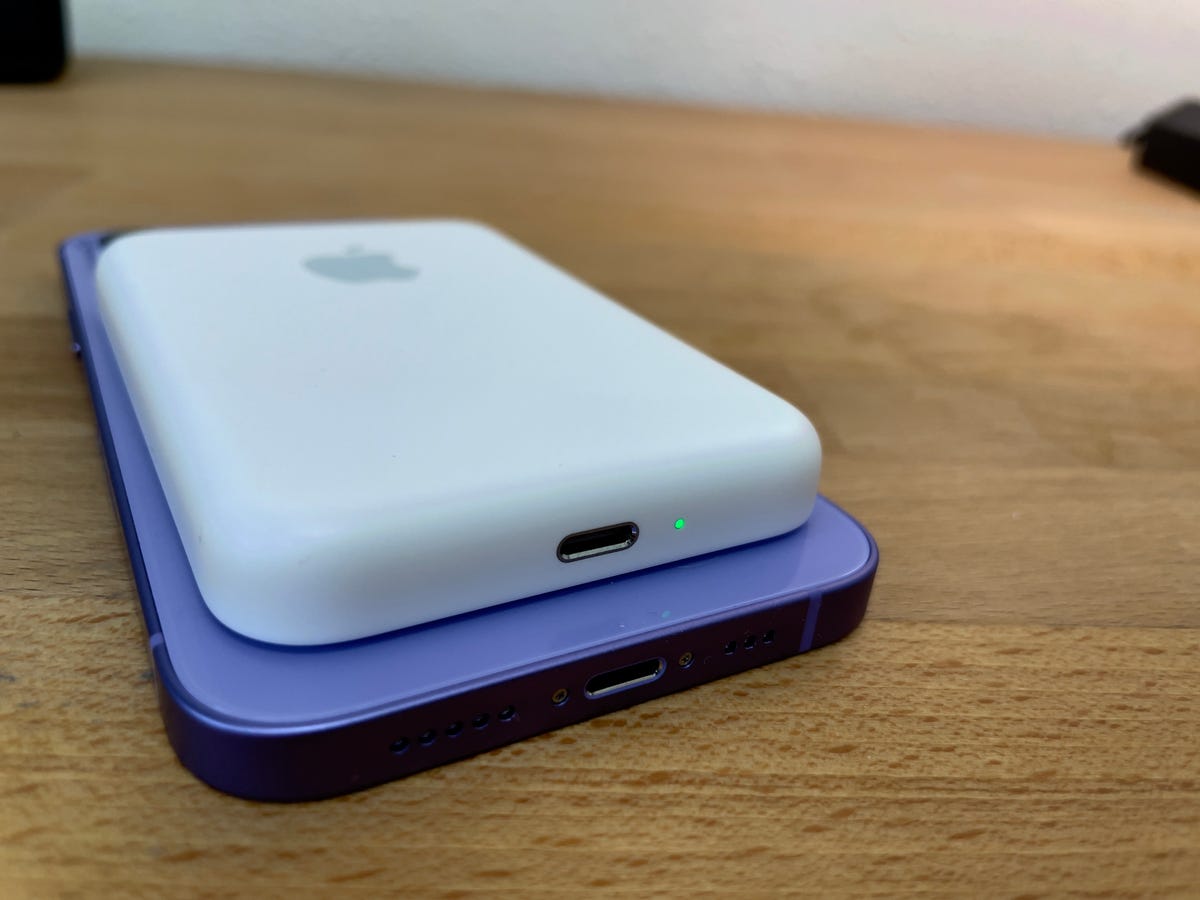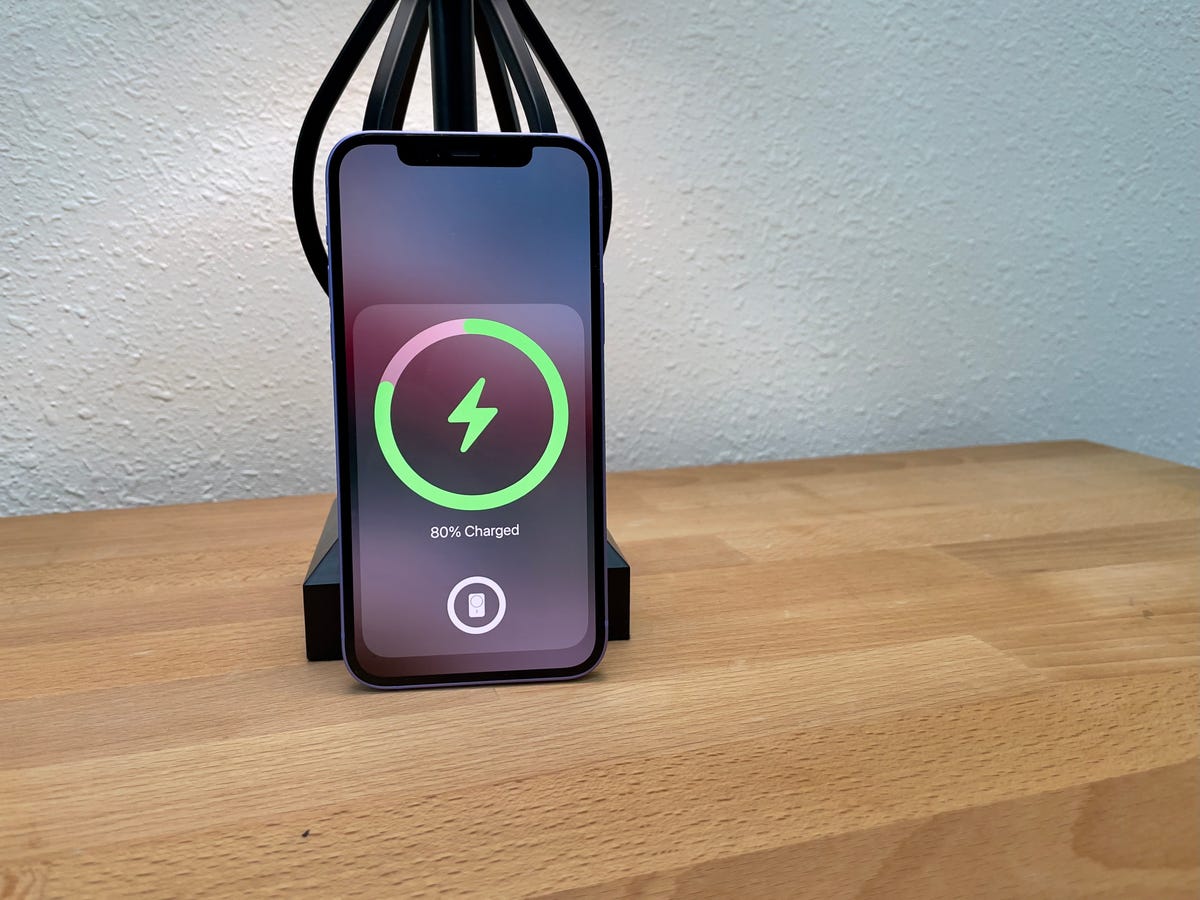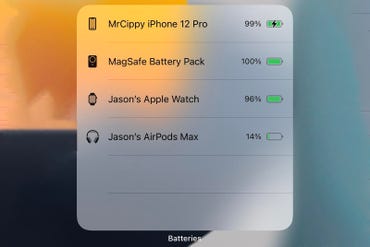Apple MagSafe Battery Pack review: Power on the go Review | ZDNet
For the last few years, Apple has followed the new iPhone models with the release of a Smart Battery Case to extend their battery life. Normally, a case with a built-in battery is something that you put on the phone and then forget about, but the cost is significantly increasing, as is the overall size of your phone.
The appeal and sales pitch for using Apple’s battery case is that it often features some sort of built-in functionality beyond what third-party cases can do. For example, the battery widget displays the iPhone’s battery and the case’s charge level. Or, as was the with the iPhone 11 Smart Battery Case, there’s an extra button that triggers the iPhone’s camera and makes it easy to quickly start taking photos.
Nearly a year after the iPhone 12 was announced, Apple announced a new battery product to help power the phone through a long day at work or while traveling. Only instead of a case, Apple released a battery pack that attaches to the back of all iPhone 12 models using its new MagSafe feature. That means the battery magnetically attaches to the back of the case and wirelessly charges the phone.
The price? $99. It’s a price that’s received some criticism, mainly because the likes of Anker, Hyper, and Mophie have all released similar battery packs with larger capacities for under $50.
So, the question has to be asked: Is Apple’s MagSafe Battery Pack worth the price? After over a week of testing, I have an answer. It’s best summed up as: Well, that depends.
MagSafe battery packs in order, from left-to-right, of smallest to biggest
Jason Cipriani/ZDNet
Apple MagSafe Battery Pack: Design
Looking at pictures of the MagSafe Battery Pack on Apple’s website left me with the impression that it was covered with the same rubber-like material that the Smart Battery cases had used. When I received the review sample from Apple, I was mildly disappointed to discover that it actually has a plastic shell. I’m sure the material change has something to do with how the battery pack handles the heat, a byproduct of wireless charging. That said, the part that sits against your phone is a soft rubber material that will prevent scratches.
Another mild disappointment is that the pack is limited to one color: White. Granted, because it’s plastic, it’s not likely to absorb as much dirt and grime as another material would, but a space gray or black option would have been nice as well. For what it’s worth, it didn’t take long for Nomad to announce a leather cover for the battery pack that will launch in November.

Jason Cipriani/ZDNet
The pack, comparatively, isn’t big. I lined it up alongside four similar products, and it was the second smallest battery pack, with only the Oisle Ultra Thin MagSafe Power Bank being smaller.
On the magnetic side of the pack is a circle with a small line just below it. The ring indicates where the magnets are in the pack, while the line, I believe, lets you know which direction the bottom of the pack is in. It’s a similar design to what we’ve seen used in Apple’s own MagSafe cases (by the way, the pack is compatible with MagSafe cases and will charge your iPhone through the case).
On the bottom of the pack is a Lightning port, along with a small indicator light. Other than the Apple logo on the outward-facing side of the pack, that’s all there is to it. It’s a very minimal, if not basic, design.

Screenshots by Jason Cipriani/ZDNet
Apple MagSafe Battery Pack: Charging
The design doesn’t really mean a whole lot if the battery pack doesn’t do its primary job of charging your iPhone 12. This is also where some of the hesitation comes from those in the market for a battery pack for the iPhone 12. The fine print on the battery pack states it has a capacity of 1,460mAh or 11.13Wh. To put those numbers in perspective, the iPhone 12 and 12 Pro both have a battery capacity of 2,815mAh or 10.78Wh.
Anker, Mophie, and Hyper all have a MagSafe compatible battery pack for under $50 that offers 5,000mAh and around 18Wh of charge.
In other words, the hesitation surrounding Apple’s MagSafe Battery Pack is in how much of a charge it’s able to provide to an iPhone 12 due to its lower capacity.
In my testing, which consisted of completely draining an iPhone 12’s battery until it turned off and then connecting the MagSafe Battery Pack to it and letting it charge until the pack was out of battery, I saw the iPhone 12’s battery charge to 60%.
The reason the MagSafe Battery Pack doesn’t charge the iPhone 12 to 100% despite having a higher capacity (when you look at total watt-hours) is that wireless charging is highly inefficient. And you’ll never see a 100% transfer rate of capacity, regardless if you’re wirelessly charging or using a cable.
Apple MagSafe Battery Pack: Built-in features
Third-party battery packs with larger capacities will, of course, provide a longer charge, but you’re giving up some of the features that Apple built into iOS for the battery pack.
Not only is there a fancy animation when you connect the pack to the back of the iPhone that shows the charge level of your phone and the pack, but if you add a battery widget to the home screen or the today view, you can check on the pack’s charge level whenever it’s connected. In addition to integration with the battery widget, your iPhone will recognize that the pack is connected and limit itself to a 90% charge to prolong your iPhone’s battery health. If you want to charge to 100% you can use the Low Power Mode icon in Control Center to bypass battery optimization.
Charging the battery pack itself can be done a few different ways, one of which is a completely new iPhone feature we’ve only heard rumors of, but were yet to see put to use.

Screenshot by Jason Cipriani/ZDNet
Naturally, you can plug a Lightning cable into the battery pack and it will charge, just like your iPhone. Normally the wireless charging rate for the battery pack, when it’s connected to your iPhone is 5W. However, if you connect the pack to a 20W wall charger, it will act as a wireless charging pad and charge your phone at a full 15W. In that setup, your iPhone will charge first, and then the pack will finish charging.
If you want to charge both the pack and your iPhone at the same time, you need to place the pack on your iPhone and then connect a Lightning cable to your iPhone, and the other end of the cable to a 20W or higher wall adapter. In that scenario, your iPhone will use reverse wireless charging to charge the battery pack at the same time the phone itself is charging.
Interesting, right? As I already said, we’d heard rumors and leaks saying Apple has been working on reverse wireless charging for the iPhone, similar to what Samsung’s Galaxy phones and the latest Google Pixel have now. The feature turns your phone into a makeshift Qi charging pad that can top off any Qi-compatible device, like earbuds or a smartwatch.
For now, however, Apple is limiting this feature to only charging the battery pack. It’s hard to imagine that this isn’t some sort of feature test and that soon we’ll see Apple expand reverse wireless charging to other devices like AirPods or, perhaps, an Apple Watch.
It’s unclear if that sort of functionality will be limited to the next iPhone model, or if it can be enabled via a software update in the same way that iOS 14.7 added support for the MagSafe Battery Pack.
As for real-world use, I’ve found the battery pack incredibly convenient. Instead of always having a bulky case attached to my phone, I can put the pack on when I need it and remove it when I don’t. It’s done a good job of preventing my iPhone from dying by the end of the day.
Apple MagSafe Battery Pack: The bottom line
The MagSafe Battery Pack at $99 is more expensive than the competition, but it comes with features that third-party accessory makers can’t implement. For some, those features — like the ability to check on the pack’s charge level, reverse wireless charging, and ease of use — are worth paying extra for.
For those who balk at the price tag, Anker or Mophie’s equivalent battery packs are worth considering.
For all the latest Technology News Click Here
For the latest news and updates, follow us on Google News.
